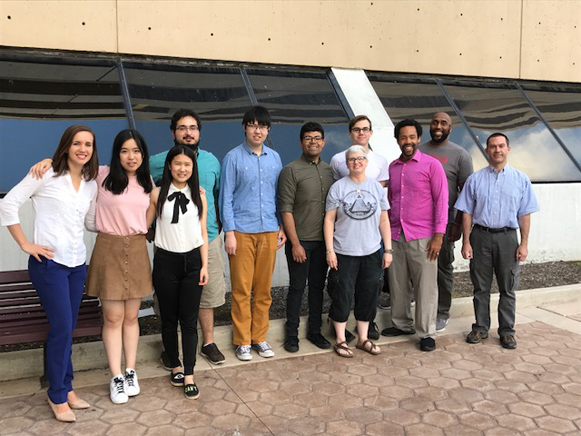Summer Undergraduate Applied Mathematics Institute
May 30 - July 25, 2017
Projects
► The Impact of three point differential on winning in the national basketball association, Yu Pan
Advisor: Aris Winger
Abstract: The impact of the three point shot has increased over the last decade in the National Basketball Association (NBA). Teams, most notably the Houston Rockets, have centered their entire offenses around the shot as a means of victory. In this paper we examine the last 10 years of NBA games to investigate the impact of three point differential on victory. In addition to the analysis of the data, we use the date to create constraints as we formulate an integer programming model to assess the feasibility regions for winning with and without an advantage in three point differential. The model is then compared to what the data suggests and conclusions are made.
► Comparison of N-period Binomial and Trinomial Asset Pricing Models, Thomas Devine, Myles Ellis, Branndon Marsical
Advisor: David Handron
Abstract: The trinomial model is used to model stock prices and compute the present value of options. The factors that measure up, middle and down movements are u, m, and d, respectively. To ensure that our model is arbitrage-free, we choose u = 1+r+a and d = 1+r+a for some a between 0 and 1+r. The program we implement web-scraped historical stock prices and current strike prices from Yahoo Finance, a maturity date, an interest rate, and the current stock price. Utilizing gradient descent, we compare the real-world data to our model and develop an expression for the SSE to measure our model's error.
► Modeling Optimal Race Strategies: A look at conquering World Records through fitting protocols, Timothy Woods
Advisor: Aris Winger
► Anti-Ramsey Multiplicities, Xiang Si, Yunus Tuncbilek, Ruifan Yang
Advisor: Michael Young
Abstract: For a graph $G$ with $m$ vertices, $\frac{M(G,n)}{\left(\frac{\binom{n}{m}m!}{|Aut(G)|}\right)}$ is called the $\textbf{density}$ or $\textit{Ramsey multiplicity constant}$ and is denoted by $C(G,n)$. Burr and Rosta proved that $C(G,n)$ is nondecreasing in $n$, stated that $G$ is $\textit{common}$ if $\displaystyle{\lim_{n \to \infty} C(G,n) = 2^{1-e}}$, and Jagger showed that any graph containing $K_4$ is non-common. This paper discusses the maximum of rainbow subgraphs in $K_n$ of certain graphs (i.e. disjoint stars, complete graphs, bipartite graphs).
Students
- Thomas Devine, University of North Dakota
- Myles Ellis, University of Massachusetts, Boston
- Branndon Marsical, University of California, Berkeley
- Allison Pan, Mount Holyoke College
- Xiang Si, Carnegie Mellon University
- Yunus Tuncbilek, Yale
- Timothy Woods, Pomona College
- Ruifan Yang, Boston College
Group photo

Faculty

Dave Handron, Associate Teaching Professor
Course instructor
Project Director
E-mail: handron@andrew.cmu.edu
Wean Hall 6214
412-268-5583

Michael Young, Assistant Professor, Iowa State University
Project Director
E-mail: myoung@iastate.edu
